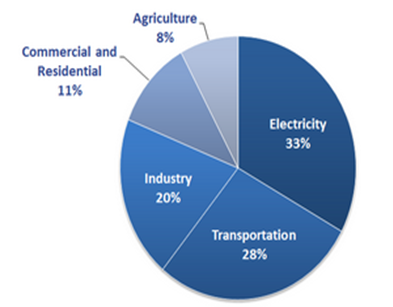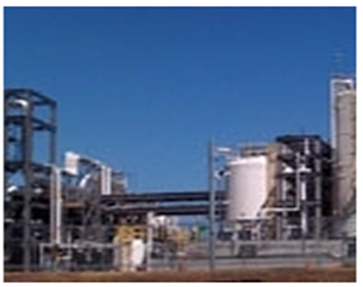Introduction
Industrial production is one of the major drivers of economic growth in the contemporary society. However, manufacturing activities often cause serious environmental pollution. This mainly occurs due to the use of fossil fuels, non-biodegradable raw materials, and toxic chemicals in various manufacturing industries.
In order to protect the environment, manufacturers have focused on developing technologies that help them to eliminate pollutants and effluents in their wastes before discharging them into the ambient environment. Nonetheless, the persistent increase in pollution implies that manufacturers are yet to find perfect solutions to environmental pollution.
This paper analyzes the effectiveness of the techniques used by manufacturing industries to prevent pollution. Based on the analysis, conclusions will be made concerning the possibility of having 100% clean air, water, and soil in a highly technological society.
Background
According to EPA (2013), manufacturing sector is the third largest source of air pollution as shown in figure 1. The industry causes air pollution through emission of greenhouse gases such as carbon dioxide and sulfur oxide. It also leads to water and soil pollution through discharge of toxic effluents into water bodies and communal land.
Owing to the increase in public outcry concerning the negative effects of environmental degradation, manufacturing firms have focused on preventing pollution by treating their wastes at the factory level. This involves using technologies that remove pollutants in wastewater or toxic substances in gasses that are emitted into the atmosphere.
In developed countries, manufacturers are concentrating on using “clean production methods, rather than creating pollution and then trying to clean it”. The rationale of using this strategy is that it is likely to reduce pollution at a low cost.
Figure 1: Sources of Greenhouse Gas Emission in the USA

Given the differences in complexity and nature of various manufacturing processes, the techniques used to prevent pollution vary from industry to industry. Nonetheless, the techniques can be categorized into four groups namely, product reformulation, process modification, equipment redesign, and resource recovery.
Product reformulation involves using safe raw materials to manufacture products that are associated with little or no pollution. This facilitates resource recovery, which focuses on recycling wastes.
Concisely, safe raw materials usually produce wastes that can be used for other industrial applications, thereby eliminating pollution. Process modification involves changing production techniques in order to reduce pollution. Similarly, equipment redesign involves modification of the apparatus used in production in order to improve their efficiency, which in turn reduces pollution.
Methods
The effectiveness of the pollution prevention techniques outlined in the foregoing paragraph will be analyzed by reviewing the extant literature. In particular, the review will focus on the literature on the methods that are used in various manufacturing industries to reduce pollution. The sources of the information that will be analyzed include textbooks, journal articles, and websites of environmental agencies.
Results
Effectiveness of Techniques for Controlling Pollution
The techniques used in various manufacturing industries to control pollution have varying success. Product reformulation is considered as one of the best methods of eliminating pollutants at their source since it discourages the use of raw materials that cause pollution. This technique works well in industries in which unsafe raw materials can be substituted easily with clean feedstock.
For instance, manufacturers in the electronics industry have developed printers that use UV-curable ink rather than solvent-based ink. Consequently, they have been able to reduce the amount of volatile organic compounds (VOCs) produced by printers by nearly half. This is a remarkable improvement because VOCs often cause air pollution due to their low boiling point.
In the pharmaceutical industry, manufacturers have shifted from the use of solvent-based to water-based coating materials to manufacture tablets. This has led to the elimination of approximately 24 tons of greenhouse gases that had to be emitted annually in order to produce tablets that are coated with solvent-based materials.
Despite its effectiveness, product reformulation is often very difficult. This is because some raw materials have no substitutes. For instance, copper and aluminum are the best materials for manufacturing electric cables.
However, producing them usually leads to large-scale emission of dust and greenhouse gases, as well as, acidic chemicals into water bodies. In some cases, the substitute feedstock may not work well, thereby lowering the quality of the final product.
Process modification is normally used when pollutants cannot be eliminated at source by substituting raw materials. In this case, manufacturers focus on eliminating pollutants during the production process. This can be achieved by either using production techniques that produce little pollutants or treating wastes before discharging them into the environment.
In this regard, manufacturers use technologies such as activated carbon and bio-filtration to eliminate toxic substances in the gases that they emit into the atmosphere. Activated carbon is very effective in preventing air pollution since it absorbs the pollutants in gasses.
Bio-filtration, on the other hand, uses microorganisms to dissolve pollutants in gasses. The disadvantage of this technique is that a bio-filtration system needs a large space in order to function effectively.
The main challenge in eliminating pollutants in the process of manufacturing goods is high costs. Research shows that changing from unsafe to safe production processes often involves high costs in the short-run. According to Kolstad (2011, p. 305), the high costs can be recovered in the long-term as the cost of cleaning up pollution reduces.
However, some firms might not be able to access the funds that are required to adopt clean production techniques. Consequently, they will continue to pollute the environment. Another challenge is that some pollutants cannot be eliminated during the production process.
For example, acid mine drainage often contaminates ground water. However, it can hardly be prevented because it often persists even after mining activities have been stopped in an area.
Equipment redesign is also a technique for eliminating pollutants in the process of manufacturing various goods. Firms that use this technique often focus on replacing or repairing old equipment so that they can reduce energy consumption or waste production. Manufacturers also modify existing equipment by fitting them with gadgets that detect and eliminate pollutants.
For instance, catalytic oxidizers are often used in incinerators to eliminate toxic pollutants as shown in figure 2. According to Easton (2008, p. 317), equipment redesign can only minimize pollution rather than eliminating it. This is because equipment such as filters might not be able to remove all pollutants in gasses or wastewater.
Moreover, redesigning equipment can be very expensive, especially, if it involves a complete overhaul of the production plant. Consequently, most firms opt to continue using their inefficient equipment, thereby increasing pollution.
Finally, resource recovery is used to eliminate wastes and pollutants at the end of the production process. In this regard, wastes are used as feedstock for producing different products.
This technique works well in paper and plastic industries in which nearly 100% of wastes are recycled or used to produce new products. However, it is apparent that not all wastes can be recycled. Consequently, non-recyclable wastes will continue to pollute the environment.
Figure 2: Ammonia Abatement System that Uses Catalytic Oxidizers

Feasibility of Ensuring 100% Clean Air, Water, and Soil
The discussion in the foregoing paragraphs shows that the existing techniques for preventing pollution are not perfect. Consequently, manufacturers will have to adopt several techniques to eliminate pollution. However, adopting several techniques will increase the cost of preventing pollution at the firm level. Consequently, production costs will rise, thereby lowering the profits of manufacturing firms.
In this regard, manufacturers are likely to respond in two ways. First, some firms will opt to pollute the environment and pay the damage costs such as emission taxes. This is likely to happen if the damage costs are less than the cost of investing in technologies for controlling pollution. In countries with poor enforcement of environmental laws, no firm will have the incentive to invest in technologies for controlling pollution.
Second, firms that are not able to ensure that their wastes are 100% free of pollutants will focus on providing incorrect data concerning their emission levels in order to avoid fines. In this case, the cost of monitoring the level of pollution will be very high. Consequently, it will be very difficult to ensure 100% clean air, water, and soil.
According to Easton (2008, p. 172), having an environment that is 100% free of pollution is not possible because ecological problems transcend national boundaries. For instance, air and water pollutants are usually carried by wind and moving water respectively from one country to another. Thus, the environment will still be polluted as long as other countries fail to minimize pollution.
This problem is exacerbated by the fact that different countries have varying levels of acceptable emission standards. Moreover, some countries hardly enforce environmental laws, thereby increasing the risk of pollution in neighboring countries.
Conclusion
The aim of this paper was to analyze the effectiveness of the techniques that are used by manufacturing industries to eliminate pollution. The results show that most techniques cannot eliminate all pollutants in wastes that are discharged into the environment. Additionally, adopting the techniques is often difficult due to financial constraints. This means that it is impossible to have 100% clean air, water, and soil.
In this regard, reducing pollution to an acceptable standard seems to be the most practical objective. Concisely, the acceptable level of pollution should be Pareto-efficient so that all polluters can have an incentive to adhere to it. Additionally, research should be conducted to improve the effectiveness of existing techniques for controlling pollution and to reduce the cost of adopting them.
References
Easton, T. (2008). Environmental Studies. New York: McGraw-Hill.
EPA. (2013). National Greenhouse Gas Emissions Data. Retrieved from https://www.epa.gov/
Klassen, R. (2000). Exploring the Linkage between Investment in Manufacturing and Environmental Technologies. International Journal of Operations and Production Management 20(2) , 127-147.
Kolstad, C. (2011). Environmental Economics. London: Oxford University Press.
Lober, D. (2000). Pollution Prevention as Corporate Entrepreneurship. Journal of Organizational Change Management 11(1), 26-37.
Munguia, N., Zavala, A., & Velazquez, L. (2010). Identifying Pollution Prevention Opportunities in the Mexican Auto Refinishing Industry. International Journal of Environmental Quality Management 21(3), 324-335.
Parikh, J., Balsaraf, V., & Dwivedi, P. (2010). Environmental Studies. New York: John Wiley and Sons.
Schnelle, K., & Brown, C. (2001). Air Pollution Control Technology Handbook. London: Palgrave.